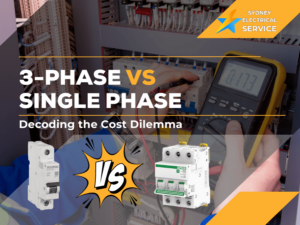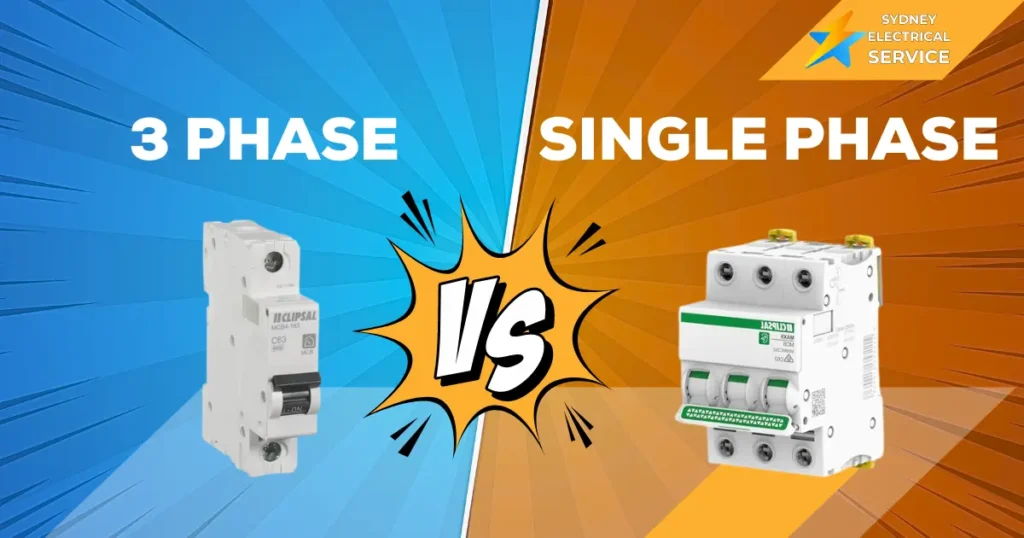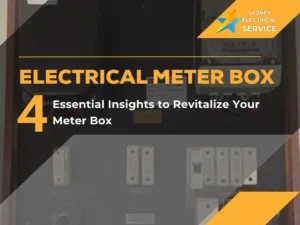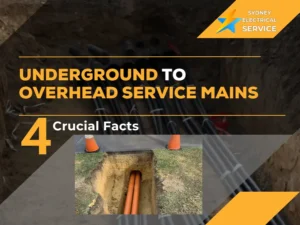Google Reviews ⭐⭐⭐⭐⭐

Selecting the right electrical system for your home – whether it’s a new build or an upgrade – is a crucial decision for Australian homeowners and builders. The choice between 3 phase vs single phase power systems affects your home’s electrical efficiency and has significant cost implications. This detailed analysis aims to help you navigate this critical decision with a better understanding of both options.
Understanding the Basics: 3 Phase VS Single Phase Power
Electrical power systems are essentially the backbone of any modern home, ensuring the smooth operation of everything from lighting to high-end appliances. In Australia, most residential properties are equipped with single-phase power. This system utilizes a single sine wave of electricity and is generally adequate for everyday appliances and lighting needs. Single-phase power is straightforward, cost-effective for installation, and meets the needs of typical household power consumption.
In contrast, three-phase power, which is more commonly found in industrial or large commercial settings, involves three electrical waves. These waves are evenly spaced in their cycle, providing a more consistent and balanced power supply. This system is particularly beneficial for homes with high power requirements or specific equipment that demands more efficient energy distribution.

The 3 Phase VS Single Phase Cost-Benefit Analysis
- Installation and Upfront Costs: Initially, setting up a three-phase power system is more expensive than a single-phase system. The complexity of three-phase systems requires additional wiring, more robust infrastructure, and potentially more labor. For those considering an upgrade, consulting with a Level 2 Accredited Service Provider (ASP) is crucial to get an accurate cost estimate.
- Efficiency and Long-Term Savings: Three-phase systems offer more efficient power distribution despite the higher upfront costs. This efficiency can be particularly beneficial for homes with high electricity demands, potentially leading to lower electricity bills in the long run. The balanced power load also means less strain on your appliances, which can extend their lifespan.
- Capacity for Future Expansion: One of the most significant advantages of a 3 phase vs single phase system is its capacity for future expansion. With the growing popularity of electric vehicles and advancements in smart home automation and renewable energy technologies, a three-phase system can provide the necessary infrastructure to accommodate these technologies without the need for further upgrades.
Real-World Applications in Australian Homes
For the average Australian home, a single-phase system is often sufficient. However, for larger homes or properties with specific high-powered appliances, like pool pumps, air conditioning systems, or fast electric car chargers, a three-phase system might be more suitable. The choice becomes even more critical when considering future-proofing your home’s electrical system for potential technological advancements.
Navigating the Upgrade Path for Your Home
Upgrading from a single-phase to a three-phase system involves several steps and considerations. It’s not a simple DIY project; it requires the expertise and accreditation of a Level 2 Electrical service provider. These professionals are not only skilled in handling the technical aspects of the upgrade but are also knowledgeable about the safety and regulatory requirements. They can offer a comprehensive assessment of your home’s electrical needs and provide a detailed plan for the upgrade, ensuring minimal disruption to your daily life.
Understanding the Regulatory Landscape
When considering an electrical upgrade or installation, it’s essential to be aware of the regulatory landscape. Australia’s electrical standards and regulations are designed to ensure safety and efficiency. A Level 2 ASP is well-versed in these regulations and can navigate the necessary paperwork and compliance issues, providing peace of mind that your electrical system is not only efficient but also safe and legally compliant.
Long-Term Considerations: Sustainability and Efficiency
With growing concerns about energy efficiency and sustainability, choosing the right electrical system also has environmental implications. Three-phase systems, with their enhanced efficiency, can be a more sustainable choice, especially when integrated with, Electric Vehicle Charging Stations and renewable energy sources like solar panels. They can handle the variable loads of solar energy more effectively, making them an ideal choice for eco-conscious homeowners.
Expert Advice and Consultation
Before making any decisions, it’s crucial to seek expert advice. An experienced Level 2 Electrician can offer insights into the most cost-effective and efficient solutions for your specific situation. They can conduct a thorough assessment of your current and future power needs, considering factors like your home’s layout, location, and lifestyle habits and determine whether 3 phase vs single phase is more appropriate to your situation. This personalized approach ensures that you make an informed decision that balances cost, efficiency, and future readiness.
Conclusion: Making an Informed Choice
Choosing between 3 phase vs single phase power for your home is a significant decision. It requires careful consideration of your immediate and future electrical needs, your budget, and the potential for long-term energy savings and sustainability. By consulting with a Level 2 ASP and considering all aspects of this decision, you can ensure that your home’s electrical system meets your needs today and is ready for the challenges of tomorrow.












